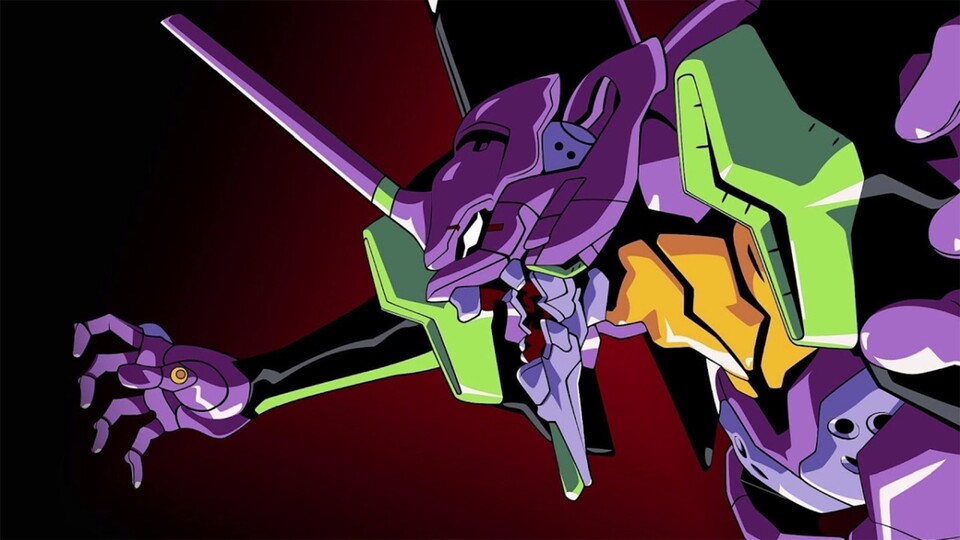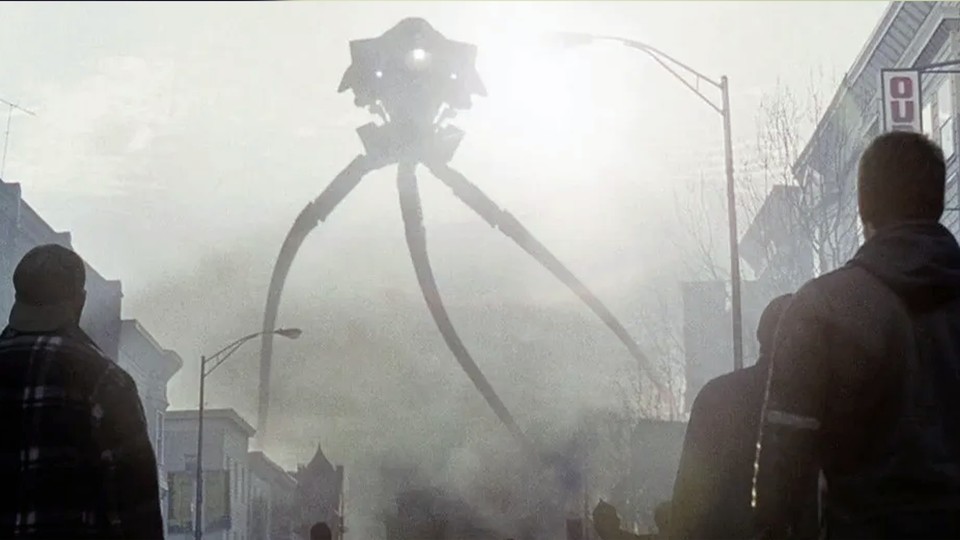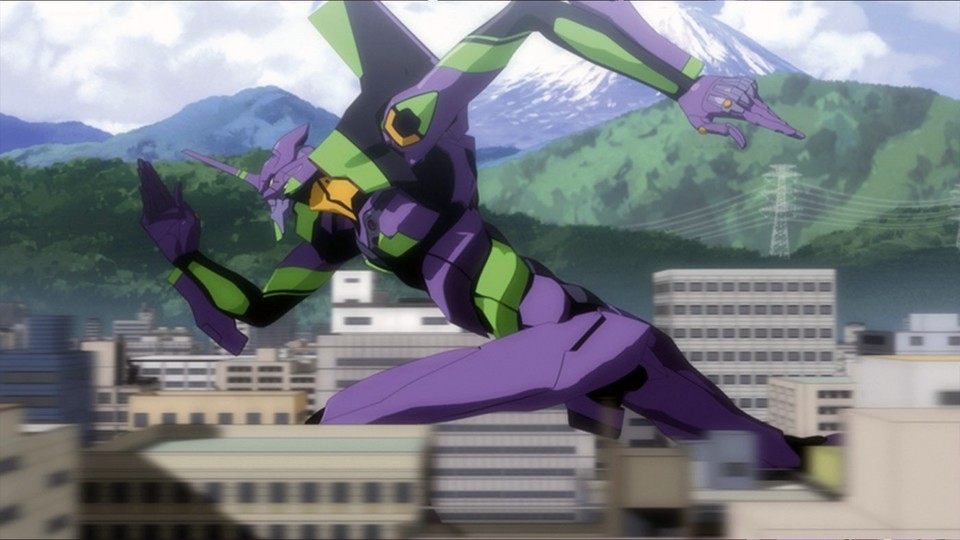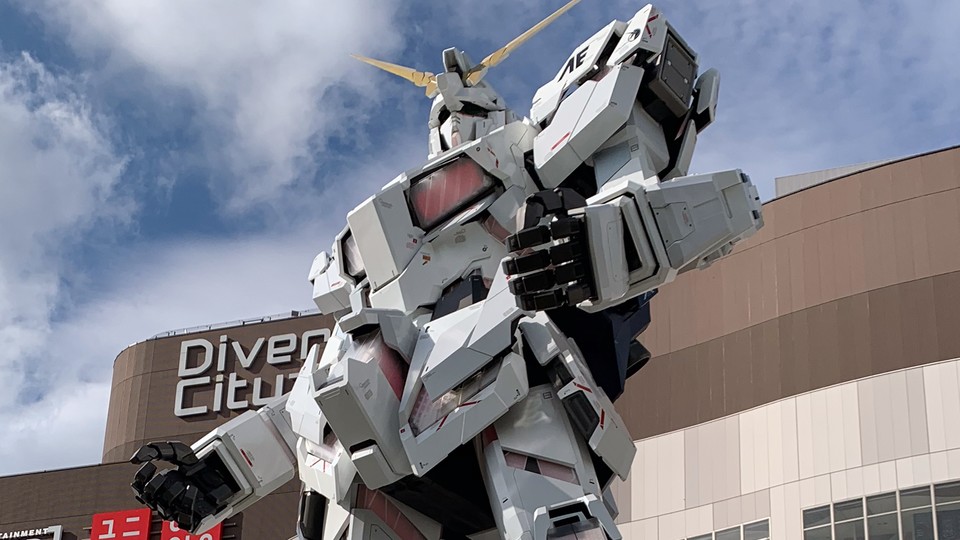
Giant robots like in the legendary anime classic Neon Genesis Evangelion: Unthinkable or not? (Image: Tokyo TV)
Neon Genesis Evangelion is one of the most popular animes of all time (which you can watch on Netflix with German dub), also because of the cool giant robots.
In addition, the Gundam franchise has enjoyed huge popularity for decades – there are entire shops with kits in Japan.
Even in Hollywood you see them on every corner. In Edge of Tomorrow there is a war against aliens called “Mimics”. So that humanity has any chance at all, it has developed mechanical combat suits in which Tom Cruise and Emily Blunt can give extraterrestrial asses a good beating.
In Fallout, players mount so-called power armor with which they can take on wild ghouls and deathclaws. The principle is similar.
But how realistic are such manned robots actually? Surely something like that isn't possible, right? But one after anonther.
The story of the manned robot

The so-called tripods are among the first manned robots in fiction. (Image: Universal)
The idea came up as early as 1868 when the author Edward S. Ellis The Steam Man of the Prairies
wrote. Jules Verne with The Steam House
and HG Wells with The War of the Worlds
followed suit (even if the tripods are manned by aliens and not humans).
From 1931 onwards, Japan took the mecha scepter into its hand. Published this year Ōgon Bat
as Kamishibai, a type of play performed on the street, with an evil large robot as the antagonist. With Atomic Power Android
The hero finally took the wheel in his hands in 1948. From then on, the success of the mechas never stopped.

Always moving forward: Mecha manga and anime are still extremely popular in Japan. (Image: Tokyo TV)
Giant robots are also very popular in video games. The celebrated MechWarrior series alone has brought twelve games onto the market since 1989, most recently the fifth part of the main series in 2019. Not forgetting the Power Armors in the Fallout series.
But does something like that actually exist?
Japan is already producing mechas
Tsubame Industries, a start-up in Tokyo, has already introduced human-controlled robots, but see for yourself:
Link to YouTube content
Archax is four and a half meters tall and weighs three and a half tons. The mecha has an upright robot mode and can transform into a vehicle to travel at almost 10 km/h. The video also shows the cockpit with three screens, which looks very futuristic.
Cost: $3 million per mecha. Founder Yoshida plans to initially only sell five robots.
However, Archax is not intended for fightingbut should primarily be used in disaster relief and possibly in space.
The question arises: Are fights with mechas even possible?
That's what experts say
In a 2021 article, Wired interviewed industry experts such as mechanical engineers and robot designers on the topic – and their answers are as detailed as they are interesting.

The Gundam on Odaiba is massive at almost 20 meters, but not intended for fighting.
The mecha in the picture is on Odaiba in Japan. When we think of giant robots, we basically think of humanoid forms, but they are actually quite impractical.
According to the expert in the interview, the immense weight of all the mechas alone would destroy the ground beneath them. Concrete would simply crumble and natural soil has too different properties for the mecha to walk on safely – there is a risk of tipping over.
To counteract this, there are three options: Huge metal clown shoes that distribute the weight better, significantly more legs like centipedes, or chains that pull the mecha, like the Shagohod from Metal Gear Solid 3.

A pretty impressive mecha in Metal Gear Solid 3 – at least until Snake blows it up. (Image: Konami)
Piloting such a vehicle would be hell for the pilots because our bodies couldn't withstand the constant shaking and shaking for a long time. That's why drivers only operate industrial or demolition vehicles for a few years at most, so that their bodies are not harmed.
The Wired article concludes that mechas are not suitable for combat. There are too many questions about pilot safety and physics as such for giant robots to be truly operational.
Experts see their use more in disaster relief or large-scale terraforming, tasks that require large machines.
So let's marvel at the sheer opulence and coolness of robots like the Odaiba Gundam and leave fighting mechas in fiction.
1:39
The Odaiba Gundam is impressive, especially in motion
Speaking of building with robots: An Australian company is showing the way.
Did you know that the first machines were used in ancient times? At that time they were primarily used for show purposes in plays. In a story, “Deus ex machina” describes the last-second rescue that seemingly comes out of nowhere and literally means “God from the machine.” This can be traced back to those Greek plays where the god from the machine saved the day.


 What’s happening with AI? Researcher explains why you can look forward to more creative NPCs, competition for ChatGPT and hot dog tomatoes
What’s happening with AI? Researcher explains why you can look forward to more creative NPCs, competition for ChatGPT and hot dog tomatoes Cowboy launches new on-demand service: That’s what’s inside
Cowboy launches new on-demand service: That’s what’s inside The new 4K Fire TV stick is now brutally reduced and transforms your old television into a smart TV
The new 4K Fire TV stick is now brutally reduced and transforms your old television into a smart TV The best mouse I’ve ever had, convinces me for gaming, work and home office and is different than all its predecessors!
The best mouse I’ve ever had, convinces me for gaming, work and home office and is different than all its predecessors! The first smart glasses suitable for everyday use that you can buy
The first smart glasses suitable for everyday use that you can buy